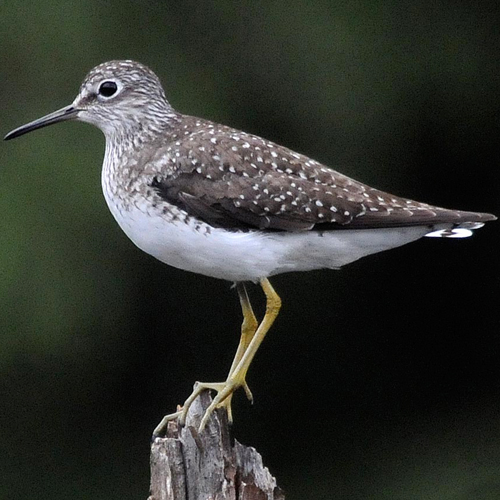General Description
The Solitary Sandpiper is shaped like the Greater and Lesser Yellowlegs, but is smaller than both and has shorter, greenish legs. The bill is straight, thin, and of medium length. The dark back is covered in light spots, and the head is streaked gray. The head is dark enough that the white eye-ring is fairly distinct. The tail pattern, seen in flight, is distinctive. The outer edges are white, barred with black, with a dark center. The wings are entirely dark underneath, sharply contrasting with the white belly.
Solitary Sandpiper's are Fairly Common in Western Washington from April May August September.Habitat
During the breeding season, Solitary Sandpipers inhabit muskeg bogs surrounded by spruce. During migration, they are usually found along the banks of wooded streams, in narrow marsh channels, and sometimes along the edges of open mudflats. They can also be found in places not usually frequented by shorebirds, such as drainage ditches and mud puddles. This is predominantly a freshwater species and generally avoids tidal flats and salt marshes. Solitary Sandpipers winter in swamps and along river-banks.
Behavior
Solitary Sandpipers do not gather in flocks. They are extremely alert and one of the first species to give alarm calls in response to a perceived threat. These sandpipers usually forage in shallow water, picking up food items from the surface or probing into the water and mud. They may also use their feet to stir up small creatures from the bottom. Solitary Sandpipers bob the front half of their bodies up and down, a characteristic behavior of this genus. When alarmed, they often fly straight up in the air to escape, a flight pattern that is perhaps an adaptation to the closed wooded areas they inhabit. The Solitary Sandpiper's call sounds like high-pitched whistles.

No comments:
Post a Comment